
Crime at Guildford is a 1935 detective novel by the writer Freeman Wills Crofts. Crofts was a leading figure of the Golden Age of Detective Fiction and often set his novels in Surrey where he lived close to Guildford. It was the thirteenth in a series of novels featuring Inspector French. It was published in America by Dodd Mead under the alternative title The Crime at Nornes.

Mystery on Southampton Water is a 1934 detective novel by the Irish writer Freeman Wills Crofts. It was the twelfth in a series of novels featuring Inspector French and takes the form of an inverted detective story, the second Crofts wrote that year after The 12.30 from Croydon. It was published in America by Dodd Mead under the alternative title Crime on the Solent.
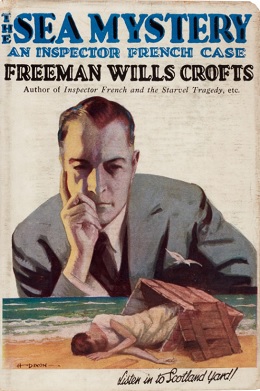
The Sea Mystery is a 1928 detective novel by Freeman Wills Crofts. It is the fourth in a series of novels featuring Inspector French of Scotland Yard. As with a number of his works Crofts creates a puzzling mystery which French is then able to solve using a Tide table and Bradshaw's Guide to the railways. The plot has some similarities with his debut novel The Cask (1920).

The Cask is a 1920 detective novel by the Irish-born writer Freeman Wills Crofts. His debut novel, it is considered his masterpiece. Long after the author's reputation had declined, this book was still hailed by critics as a cornerstone of the genre Crofts had been working as a railway engineer before writing the novel, but its success launched him as one of the leading writers of the Golden Age of Detective Fiction. He later went on to create the character of Inspector French of Scotland Yard who appeared in a long-running series of novels.
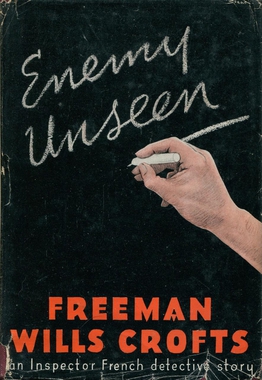
Enemy Unseen is a 1945 detective novel by Freeman Wills Crofts. It is the twenty-fifth in his series of novels featuring Chief Inspector French, a prominent figure of the Golden Age of Detective Fiction. A review by Anthony Boucher in the San Francisco Chronicle noted it was "For the patient only, but for them a rewarding treasure."
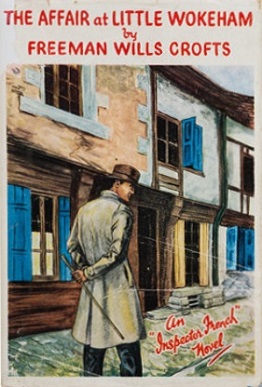
The Affair at Little Wokeham is a 1943 detective novel by the Irish writer Freeman Wills Crofts. It is the twenty-fourth in his series of novels featuring Inspector French, a prominent figure of the Golden Age of Detective Fiction. It was published in the United States under the alternative title of Double Tragedy.

Fear Comes to Chalfont is a 1942 detective novel by the Irish writer Freeman Wills Crofts. It is the twenty-third in his series of novels featuring Inspector French, a prominent figure of the Golden Age of Detective Fiction. Like much of the author's work it combines a traditional mystery with a police procedural.

Antidote to Venom is a 1938 detective novel by the Irish-born novelist Freeman Wills Crofts. It is the eighteenth in his series of novels featuring Inspector French, a Scotland Yard detective known for his methodical technique. It was reissued in 2015 by the British Library Publishing as part of a group of crime novels from the Golden Age of Detective Fiction.

The End of Andrew Harrison is a 1938 detective novel by Freeman Wills Crofts. It is the seventeenth in his series of novels featuring Inspector French, a Scotland Yard detective of the Golden Age known for his methodical technique. The title character closely resembles Sigsbee Manderson, the murder victim of E.C. Bentley's celebrated 1913 novel Trent's Last Case.

Found Floating is a 1937 detective novel by the Irish writer Freeman Wills Crofts. It is the sixteenth in his series of novels featuring Inspector French, a Scotland Yard detective of the Golden Age known for his methodical technique.

The Box Office Murders is a 1929 detective novel by the Irish-born writer Freeman Wills Crofts. It is the fifth in his series of novels featuring Inspector French, a prominent figure of the Golden Age of Detective Fiction. It was published in the United States the same year by Harper under the alternative title The Purple Sickle Murders.
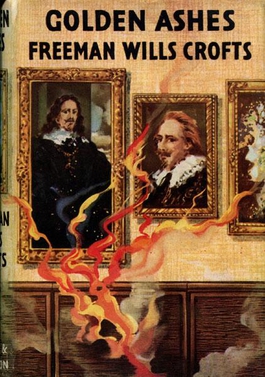
Golden Ashes is a 1940 detective novel by the Irish writer Freeman Wills Crofts. It is the twentieth in his series of novels featuring Inspector French, a prominent investigator of the Golden Age of Detective Fiction.

Death on the Way is a 1932 detective novel by the Irish writer Freeman Wills Crofts. It is the ninth in his series of novels featuring Inspector French, a prominent figure of the Golden Age of Detective Fiction. It was published in the United States the same year by Harper under the alternative title Double Death.

Up the Garden Path is a 1949 detective novel by John Rhode, the pen name of the British writer Cecil Street. It is the forty ninth in his long-running series of novels featuring Lancelot Priestley, a Golden Age armchair detective. It was published in America by Dodd Mead under the alternative title The Fatal Garden. Reviewing the novel in The Observer, Maurice Richardson concluded "Mr. Rhode has lost very little of his grip."

The Two Graphs is a 1950 detective novel by John Rhode, the pen name of the British writer Cecil Street. It is the fiftieth in his long-running series of novels featuring Lancelot Priestley, a Golden Age armchair detective. It was published in America by Dodd Mead under the alternative title Double Identities. Writing in The Observer Maurice Richardson noted a "slight slackening of tension towards the finish but an excellent specimen of Rhode’s later period."
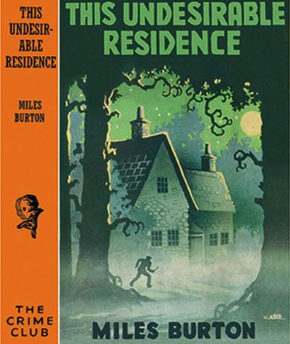
This Undesirable Residence is a 1942 detective novel by the British writer Cecil Street, writing under the pen name of Miles Burton. It was part of a lengthy series of books featuring the detective Desmond Merrion and Inspector Arnold of Scotland Yard. It was published in the United States by Dodd Mead under the alternative title Death at Ash House.

Mr. Westerby Missing is a 1940 detective novel by the British writer Cecil Street, writing under the pen name of Miles Burton. It was the twenty-second in a series of books featuring the detective Desmond Merrion and Inspector Arnold of Scotland Yard. It was published in the United States by Doubleday the same year.

Anything to Declare? is a 1957 detective novel by Freeman Wills Crofts. It is the twenty ninth and final entry in his series of novels featuring Inspector French, a prominent figure of the Golden Age of Detective Fiction. The author had been in poor health for much of the decade, and struggled to finish this book which was published a few weeks before his death.
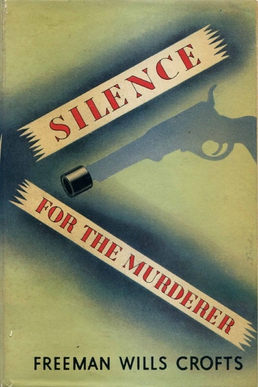
Silence for the Murderer is a 1949 detective novel by the writer Freeman Wills Crofts. It is the twenty-seventh entry in his series of novels featuring Inspector French, a Scotland Yard detective of the Golden Age known for his methodical technique. The book attempt to create more complex characterisation than was usual in the series.
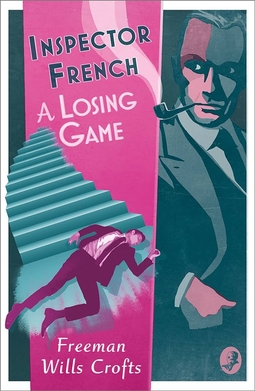
The Losing Game is a 1941 detective novel by the Anglo-Irish writer Freeman Wills Crofts. It is the twenty second in his series of novels featuring the Golden Age detective Inspector French of Scotland Yard. It was published in the United States by Dodd, Mead under the alternative title A Losing Game.




















